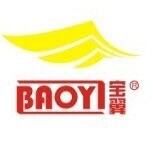-
Welcome to Auto Parts Forum
Whether you are a veteran automotive parts guru or just someone looking for some quick auto parts advice, register today and start a new topic in our forum. Registration is free and you can even sign up with social network platforms such as Facebook, X, and LinkedIn.
When And Why To Replace Brake Rotors
-
Similar Content
-
Similar Topics
-
By WiperTech008
When Should You Replace Your Wiper Blades?
Wiper blades keep your windshield clear, but since they’re made of rubber, they wear out with time and need to be swapped out regularly. How long they last really depends on how often you use them, where you drive, and whether you take care of them. Watch for these signs that indicate it's time for new wipers:
Streaking or Noise
Notice streaks or that awful squeaking sound? Yep, it’s probably time for a new pair. For a temporary fix, clean the blades with vinegar or alcohol, but replace them as soon as possible.
Visible Damage
Check the rubber blades regularly for cracks, chips, or deformities. Any damage means it's time for new wipers.
Age Considerations
Standard wipers typically last 6-12 months
High-quality blades with proper care can last 2+ years
Frequent use or harsh conditions (sun exposure, dry wiping) may require replacement every 6 months
Just a heads-up—if your car sits in the sun a lot or you use your wipers all the time, it’s smart to check them more often.
-
By LEarn492
Hi i have a 2006 g35x that i just got. i put sport pads in the front becuase i used them on my old car and loved the extra power that they gave me. i need new rear pads too, my question is will putting sport pads in the rear mess up my car's handling or braking? like it won't mess with the brake bias, the system that alters brake pressure to each wheel, make my car more likely to fishtail or anything like that when i hit the brakes in a corner right? it'll just give me more stopping power? i'm thinking this as all the companies sell sport pads for rear too. anyone here done this before? any tips? thanks. -
By Counterman
Standard Motor Products (SMP) announced new additions to its electronic parking brake actuator program. The company said the parking brake actuator is one of the fastest-growing categories in the automotive aftermarket. Standard offers coverage for both import and domestic vehicles.
Automakers now use electronic parking brake actuators on almost all new vehicles. These have replaced manually operated cable parking brakes. The new parking brake actuator plays a critical role in vehicle safety systems, according to SMP.
SMP: Quality Engineering in Every Parking Brake Actuator
Standard said its parking brake actuators are always 100% new and never remanufactured. They are engineered to match OE performance. These actuators integrate seamlessly with electronic safety systems.
The plug-and-play design simplifies installation. Technicians do not need additional programming. Many actuators also include the correct O-ring and hardware for a complete repair.
New Applications Cover Ford, Jeep, Subaru and More
link hidden, please login to view has introduced new applications for millions of late-model vehicles. Coverage now includes Ford models like the 2023–22 Escape, Bronco Sport, and Maverick. SMP also added the 2024–23 Super Duty trucks. Other new applications include the 2024–22 Jeep Grand Cherokee and Ram ProMaster. Mercedes-Benz vehicles through 2023 and Subaru models through 2024 are now covered.
SMP expanded its program to include additional Mazda, Audi, Volkswagen and General Motors vehicles.
SMP Supports Distributors with Training and Tools
“Standard’s parking brake actuator program is the most comprehensive in the industry,” said John Herc, vice president of vehicle control marketing at
link hidden, please login to view. “In addition to industry-leading coverage, we are providing our distribution partners with training, marketing materials and key category insights to help them capitalize on the growth of this category.” Actuator Catalog Available Online
Standard lists all parking brake actuators in its online catalog at
link hidden, please login to view. The company also supplies listings through electronic catalog providers. The post
link hidden, please login to view appeared first on link hidden, please login to view.
link hidden, please login to view -
By Dorman Products
The real reason why the negative battery cable is disconnected first and connected last
-
-






Recommended Posts
Join the conversation
You can post now and register later. If you have an account, sign in now to post with your account.
Note: Your post will require moderator approval before it will be visible.